Skip to main contentMembers
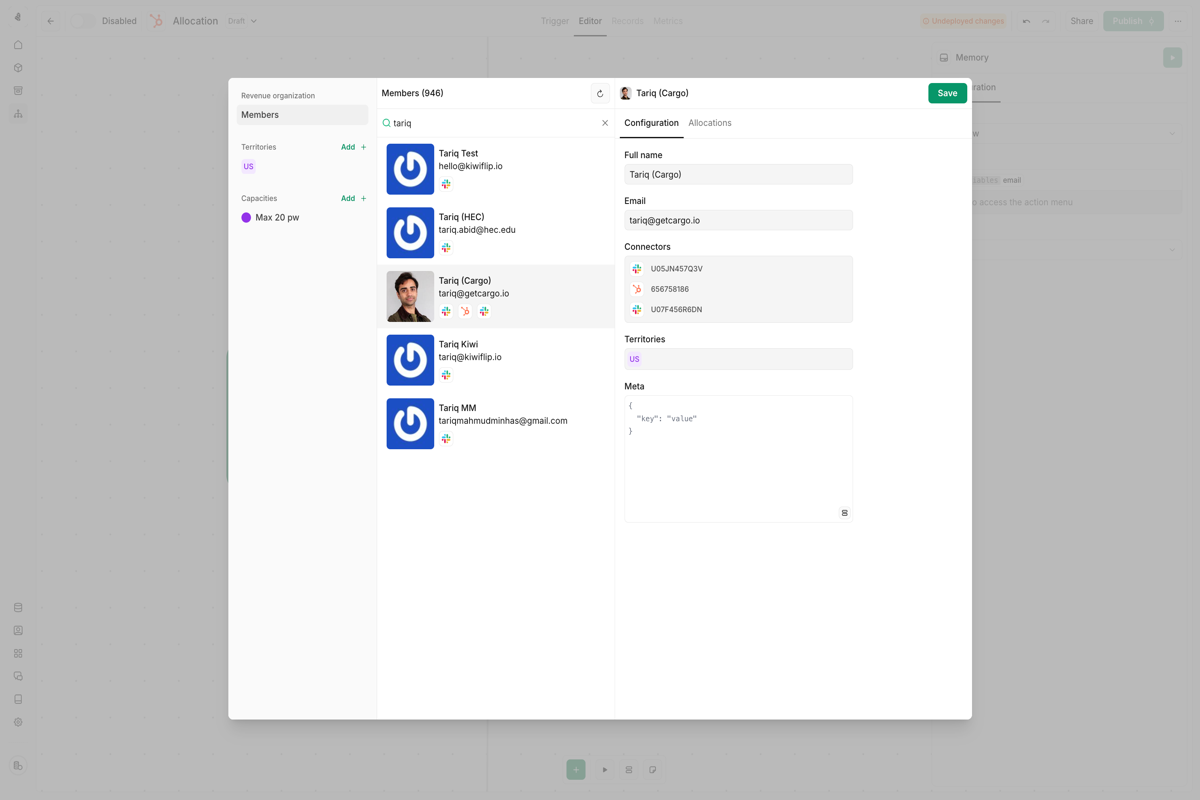 When you connect a tool that contains an object containing members of your sales organization, Cargo automatically imports these team members and keeps them updated.
This creates a unified view of your team across your workspace. Moreover, you can enhance member profiles with custom metadata (such as their spoken languages, mailboxes, etc.) to personalize how leads are assigned.
When you connect a tool that contains an object containing members of your sales organization, Cargo automatically imports these team members and keeps them updated.
This creates a unified view of your team across your workspace. Moreover, you can enhance member profiles with custom metadata (such as their spoken languages, mailboxes, etc.) to personalize how leads are assigned.
Territories
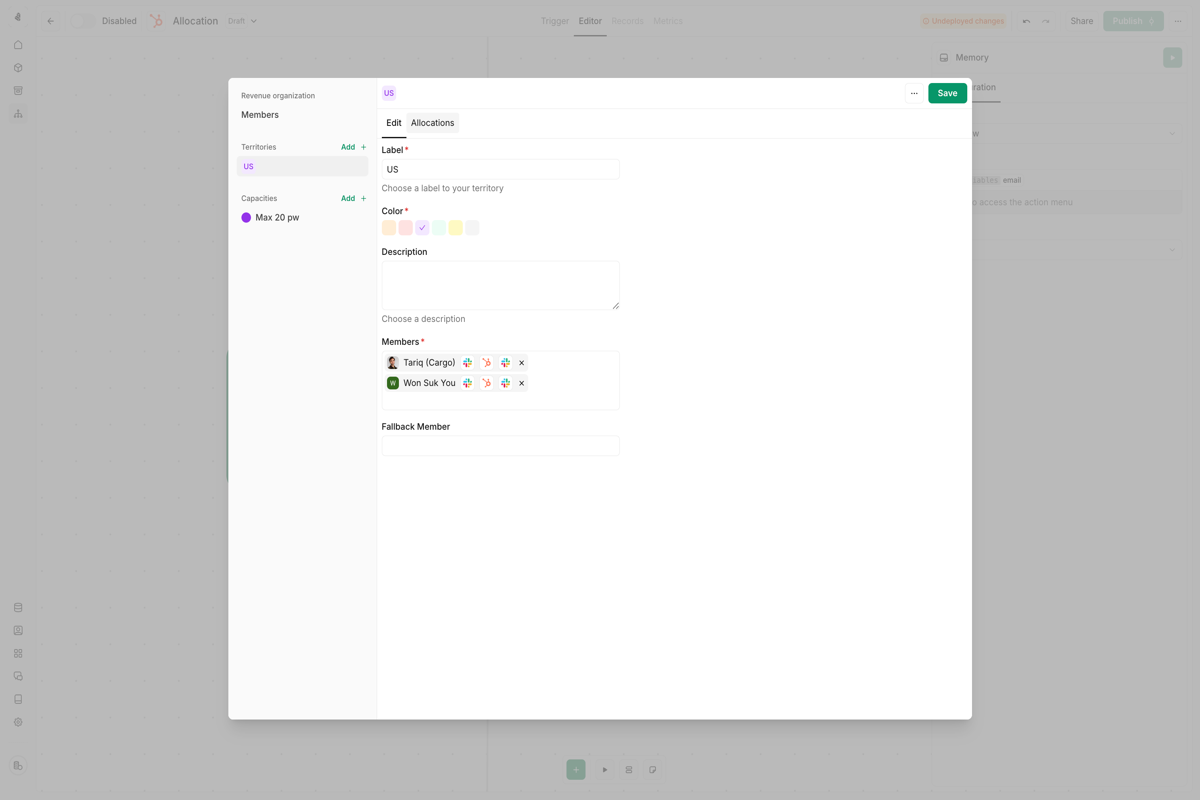 After synchronizing members, you can group members into teams representing different sales organizations.
A territory is a group of members that can reflect any structure within your organization, such as geographical regions or industry focus groups. Each territory can also have a fallback member who will be used for allocation when other members are unavailable.
After synchronizing members, you can group members into teams representing different sales organizations.
A territory is a group of members that can reflect any structure within your organization, such as geographical regions or industry focus groups. Each territory can also have a fallback member who will be used for allocation when other members are unavailable.
Capacity
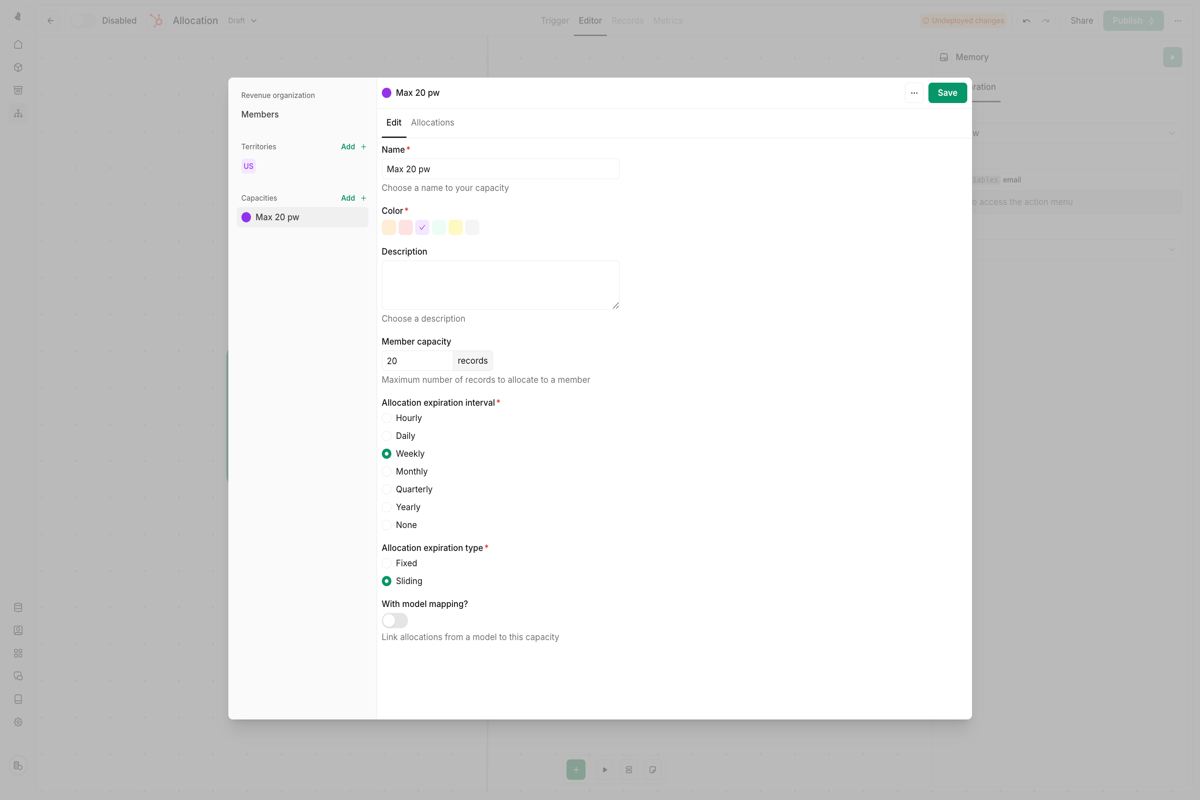 Capacity defines a maximum lead allocation limit per member. Each configuration specifies allocation count and timeframe, helping distribute work fairly according to business logic.
For instance, you can set a capacity of 3 records per day if that matches your average sales cadence.
All capacities are calculated independently. A member can be available for allocation under one capacity configuration while being marked as fully booked under another.
Capacity defines a maximum lead allocation limit per member. Each configuration specifies allocation count and timeframe, helping distribute work fairly according to business logic.
For instance, you can set a capacity of 3 records per day if that matches your average sales cadence.
All capacities are calculated independently. A member can be available for allocation under one capacity configuration while being marked as fully booked under another.
Allocation node
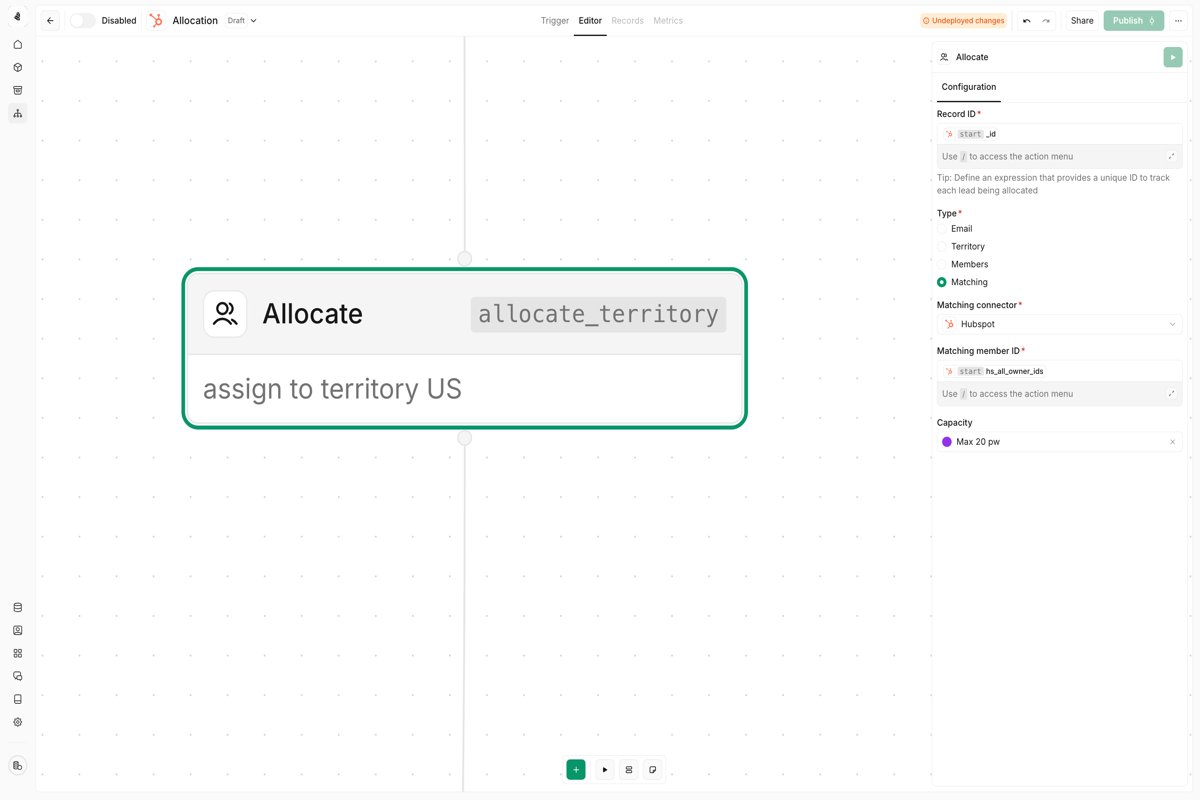 The allocation node assigns leads and manages workload distribution across the members. Allocation happens by default in a ‘round-robin’ mode, spreading assignments equally among available sales members.
The allocation node assigns leads and manages workload distribution across the members. Allocation happens by default in a ‘round-robin’ mode, spreading assignments equally among available sales members.
The only pre-requisite for this node to function is a reliable record ID, which allows Cargo to track each lead allocation internally.
The allocation node can be configured flexibly, for instance, based on their email address, territory (if defined), static list of members, or connector matching.
Capacity model mapping
 When a basic capacity calculation is not sufficient to meet your desired business logic. Use a capacity model mapping to calculate actual member capacity based on information in a Cargo data model.
When a basic capacity calculation is not sufficient to meet your desired business logic. Use a capacity model mapping to calculate actual member capacity based on information in a Cargo data model.
Data models used to map this advanced setting must be transactional objects, such as a CRM deals object, since this should be organized at allocation level (i.e. one record = one deal = one allocation).
It is obligatory to add a filter identifying the deal owner (i.e., the member assigned to the deal) using a model column that denotes the deal owner via a Cargo expression that will be used to identify the relevant member{{member.ids.<Insert connector name here>}}.
Allocation history
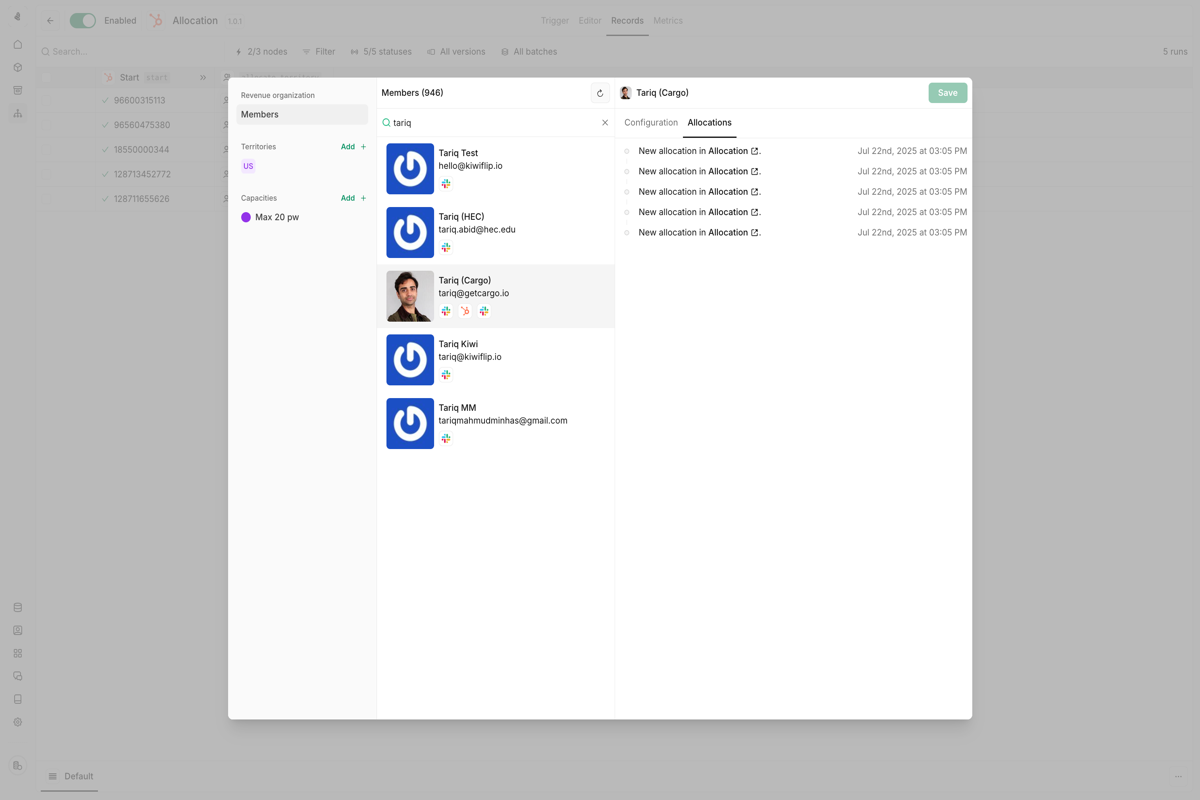 Each sales organization element (member, territory, and capacity) has a dedicated screen where all historical allocations are recorded. Each entry in the allocation history links to the specific play run that triggered that allocation.
This allows you to track how allocations are performed at each level and helps with verification and troubleshooting.
Each sales organization element (member, territory, and capacity) has a dedicated screen where all historical allocations are recorded. Each entry in the allocation history links to the specific play run that triggered that allocation.
This allows you to track how allocations are performed at each level and helps with verification and troubleshooting.
Allocation fallback
This helps the sales team provide timely responses to all leads. Cargo provides several ways to manage allocation fallbacks:
- Each territory can have one configured fallback member, which will receive all new allocations once all members of the territory have exhausted their capacity.
- The allocation node can be configured in failure mode to retry to continue allocating the lead to the member.







